A friend and I were out on an extended motorcycle ride when we unexpectedly came upon an abandoned mansion in Galveston, Texas. After exploring and taking photos, I came pack home and began doing research on the mansion. The history of this mansion and the land its built upon is quite unique. This history includes Native Americans who ate human flesh, a very real and very famous pirate, a war and ghosts.
We entered the mansion’s grounds though an arch that reads, “Stewart’s Mansion”
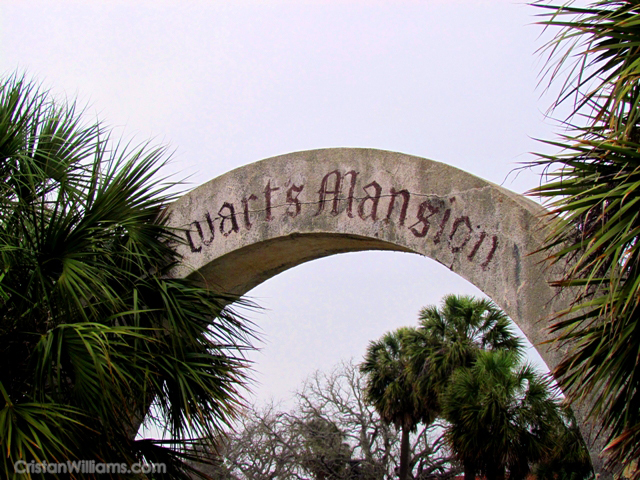
The Stewart Mansion History
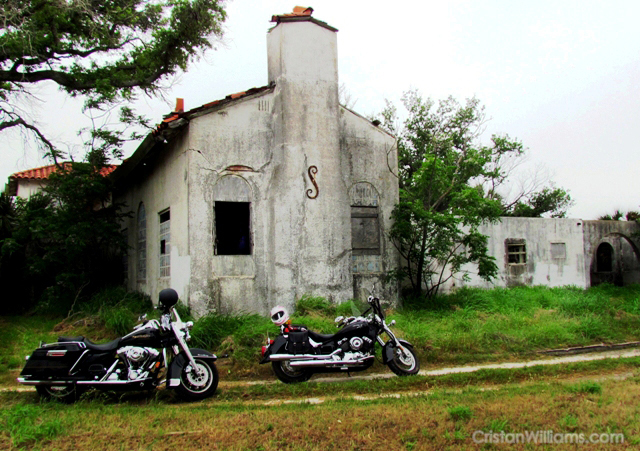
George Sealy Jr, a famous industrialist and infamous union-buster, commissioned the Spanish Colonial Revival style mansion which overlooks Lake Como as a family getaway in 1926. In 1944 the founder of the Stewart Title Guaranty Company, Maco Stewart (a man who made his fortune in insurance, banking and war), purchased the mansion as a resort home.
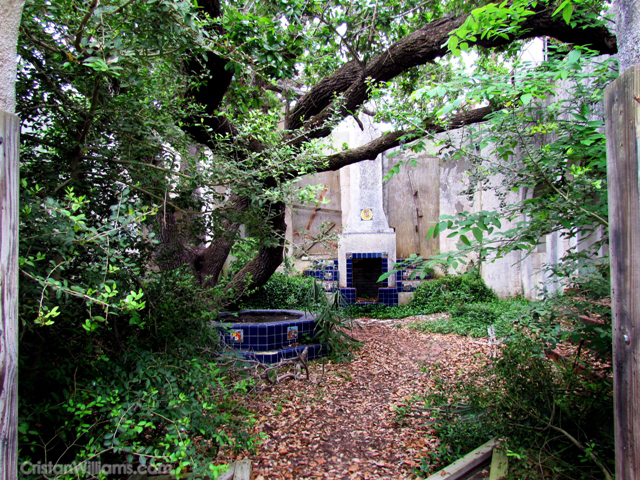
Behind the abandoned mansion, there’s a hidden courtyard with a mature oak tree, courtyard fountain and outdoor fireplace.
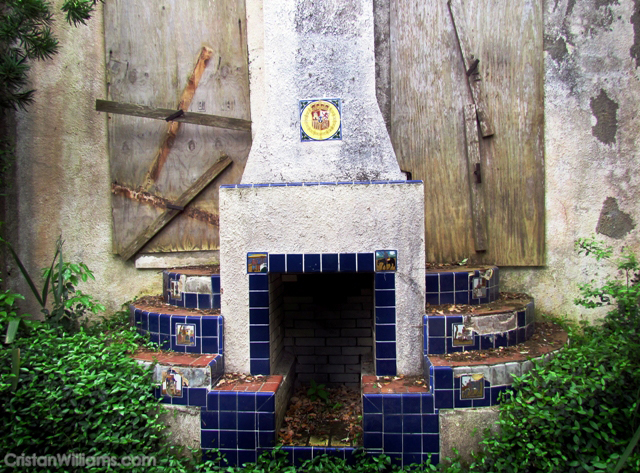
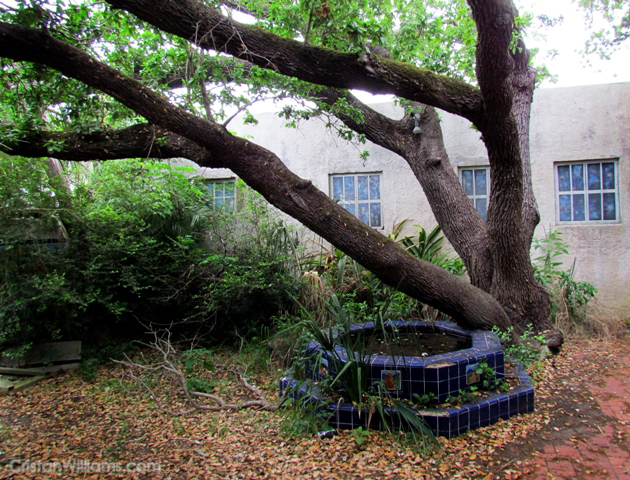
The entire courtyard is adorned with handmade tile depicting various scenes of Spanish conquest. (Until 1825, Galveston was under the control of Spain.)
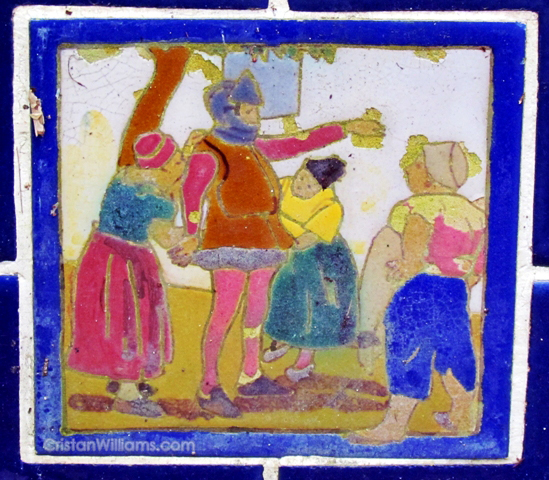
Inside the mansion the rooms are generally quite long and the entire structure seems to be made of brick and concrete.
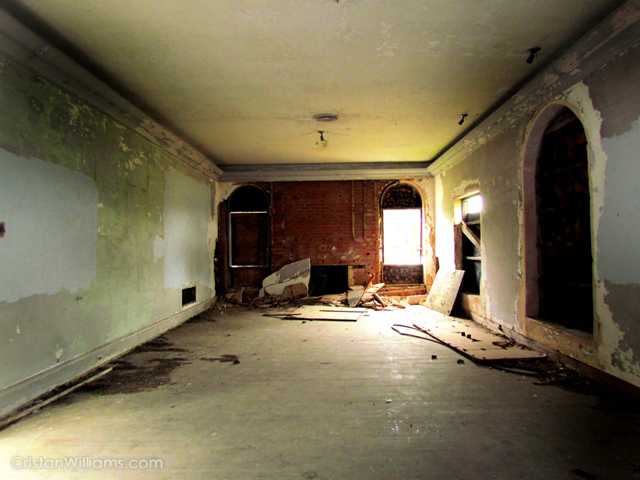
The washroom in the front of the house holds a once ornate vanity.
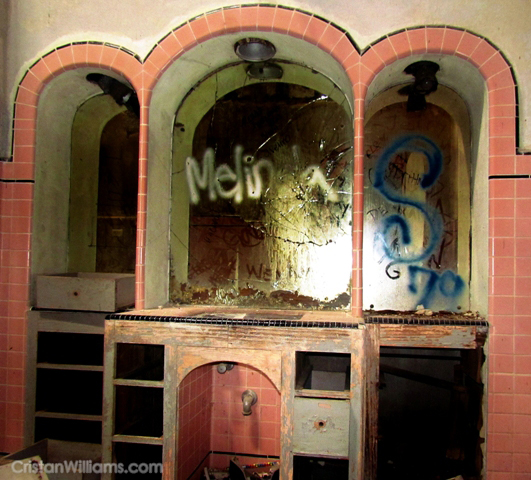
Even the crown molding and filigree are made from concrete.
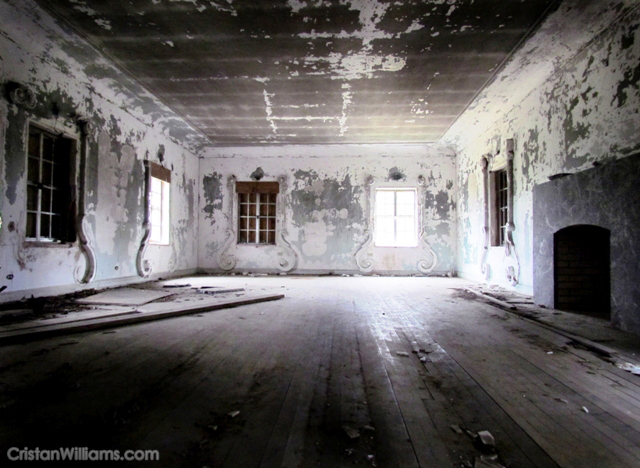
Pirates and Cannibals

Located only a few hundred feet from the mansion is a State of Texas historical marker, which reads:
Lafitte’s Grove
Fort and settlement established here in 1817 by the freebooter
Jean Lafitte
Who maintained headquarters here while preying on shipping in the Gulf of Mexico.
The Battle of the Three Trees was fought here between Lafitte’s men and Karankawa Indians, February, 1821.
Fort abandoned and burned in 1821 by Lafitte after his departure was ordered by the United States government.
The Karankawa Indians were a cannibalistic tribe (they engaged in the practice of eating their enemies) indigenous to the area. Jean Lafitte was an honest to goodness pirate who built a pirate colony of more than 1000-strong on Galveston Island.
The Stewart Mansion was built on the land in which Karankawa warriors went to war with Lafiette’s men in what is known as the Battle of the Three Trees. Lafitte’s men stole the Karankawa chief’s daughter and Karankawa warriors retaliated by attacking and killing four pirates. Lafitte found out and sent a few hundred of his men along with two cannons to attack the Karankawas. The Stewart mansion sits where Karankawa warriors equipped with only bow and arrow fought pirates equipped with guns and cannon for three bloody days. The Karankawa lost about 10% of their fighting force before retreating while the well-armed pirates lost none.
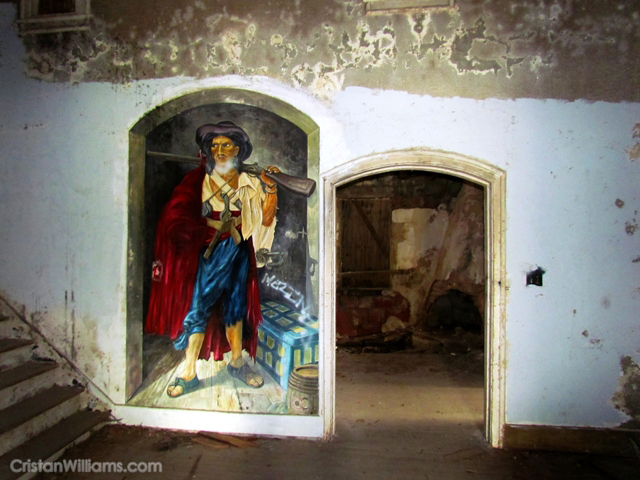
Walking into the main hall of the mansion, one is greeted by murals of various pirates. Legend has it that when the pirate Lafitte was ousted from Galveston by the US army, he burred treasure on or near the Stewart mansion property.
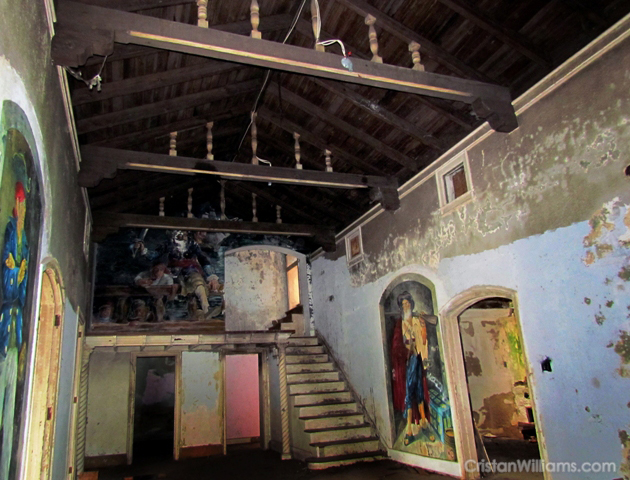
I find it interesting and more than a little disturbing that the owner of this mansion – the founder of an international insurance company and war profiteer – was apparently very taken with pirate mythos.
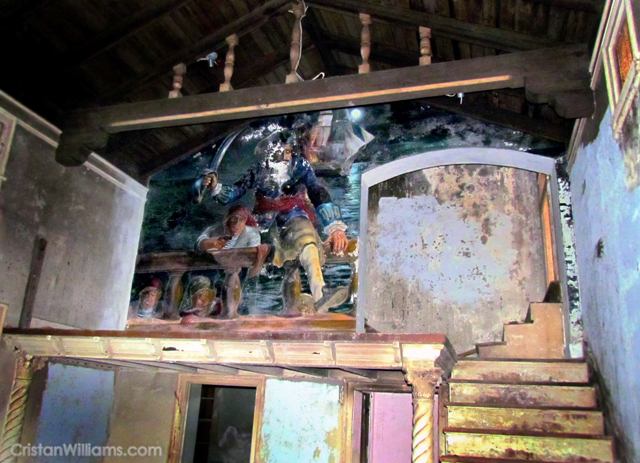
Particularly disturbing to me is that the largest mural in the room depicts a band of murderous pirates – weapons drawn – boarding a ship.
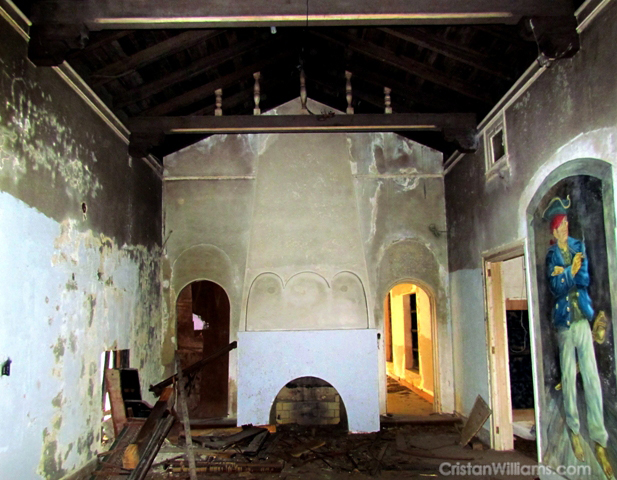
A Haunting?
Many wild tails about Stewart Mansion hauntings abound. The pirate murals supposedly change places, disembodied voices and footsteps are said to be heard and ghostly apparitions are supposedly seen by those who dare to visit this mansion. I did not encounter any of those things. However, I did see a bloody hand print on the wall:
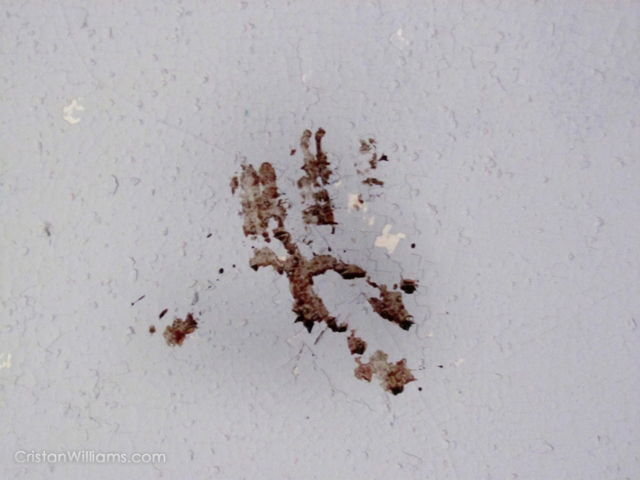
The bloody hand print is located on the south wall of the east wing (you can see this wing in the photo with our motorcycles parked outside). The print was dry and looked to be no more than a week old. While I’m sure this would be a sure sign of a Hollywood-style haunting to some, it just looked like a bloody hand print to me.
Leave a Reply
You must be logged in to post a comment.